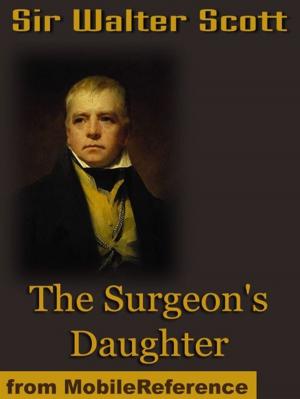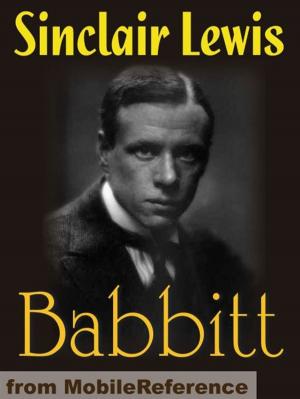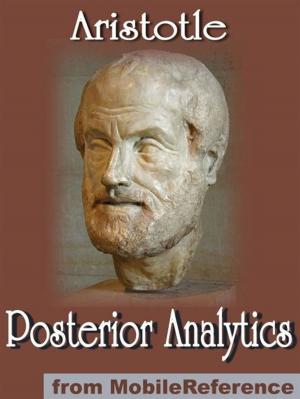King Henry VI (Mobi Classics)
Nonfiction, Entertainment, Drama, Shakespeare, Fiction & Literature, Classics| Author: | William Shakespeare | ISBN: | 9781605015927 |
| Publisher: | MobileReference | Publication: | January 1, 2010 |
| Imprint: | MobileReference | Language: | English |
| Author: | William Shakespeare |
| ISBN: | 9781605015927 |
| Publisher: | MobileReference |
| Publication: | January 1, 2010 |
| Imprint: | MobileReference |
| Language: | English |
The First Part of King Henry the Sixth is one of Shakespeare's history plays, believed written in approximately 1588-1590. It is the first in the cycle of four plays often referred to as "The First Tetralogy".The Second Part of King Henry the Sixth, or Henry VI, Part 2, is a history play by William Shakespeare believed written in approximately 1590-91. It is the second part of the trilogy on Henry VI, and often grouped together with Richard III as a tetralogy on The Wars of the Roses the success of which established Shakespeare's reputation as a playwright.Henry the Sixth, Part 3, is the third of William Shakespeare's plays, believed written in approximately 1590, and set during the lifetime of King Henry VI of England. It prepares the ground for one of his best-known and most controversial plays: the tragedy of King Richard III (Richard III of England). It continues the action from Henry VI, Part 1 and Henry VI, Part 2, though they may not have been written in that order.The play is considered the best of the three Henry VI plays and evidence of Shakespeare's ability to produce scenes of moving drama. Of particular note are Act I, Scene 4, a dramatic torture followed by an indictment of the vicious Queen, Act II, Scene 5, a gloomy commentary by the title character on the ravages of war and the trials of kingship, and Act V, Scenes 5 and 6, in which two significant characters are killed in an unrealistic albeit dramatically effective manner. Act III, Scene 2, a comic courtship, also hints at the romantic comedies to come.Like the preceding plays, "King Henry VI, Part 3" draws on partisan historical sources, such as the Chronicles of Hall and Holinshed, and further embellishes, telescopes and alters events for the sake of drama. Richard, Duke of Gloucester, the future King Richard III is, in particular, treated transhistorically, dramatically conceived of as a machiavellian grotesque and representative of an historical mechanism rather than as a recognisable human being or historical figure. He also aged considerably in order to enable his increased participation in the play, although this is not uncommon in Renaissance history plays. Excerpted from Wikipedia, the free encyclopedia.
The First Part of King Henry the Sixth is one of Shakespeare's history plays, believed written in approximately 1588-1590. It is the first in the cycle of four plays often referred to as "The First Tetralogy".The Second Part of King Henry the Sixth, or Henry VI, Part 2, is a history play by William Shakespeare believed written in approximately 1590-91. It is the second part of the trilogy on Henry VI, and often grouped together with Richard III as a tetralogy on The Wars of the Roses the success of which established Shakespeare's reputation as a playwright.Henry the Sixth, Part 3, is the third of William Shakespeare's plays, believed written in approximately 1590, and set during the lifetime of King Henry VI of England. It prepares the ground for one of his best-known and most controversial plays: the tragedy of King Richard III (Richard III of England). It continues the action from Henry VI, Part 1 and Henry VI, Part 2, though they may not have been written in that order.The play is considered the best of the three Henry VI plays and evidence of Shakespeare's ability to produce scenes of moving drama. Of particular note are Act I, Scene 4, a dramatic torture followed by an indictment of the vicious Queen, Act II, Scene 5, a gloomy commentary by the title character on the ravages of war and the trials of kingship, and Act V, Scenes 5 and 6, in which two significant characters are killed in an unrealistic albeit dramatically effective manner. Act III, Scene 2, a comic courtship, also hints at the romantic comedies to come.Like the preceding plays, "King Henry VI, Part 3" draws on partisan historical sources, such as the Chronicles of Hall and Holinshed, and further embellishes, telescopes and alters events for the sake of drama. Richard, Duke of Gloucester, the future King Richard III is, in particular, treated transhistorically, dramatically conceived of as a machiavellian grotesque and representative of an historical mechanism rather than as a recognisable human being or historical figure. He also aged considerably in order to enable his increased participation in the play, although this is not uncommon in Renaissance history plays. Excerpted from Wikipedia, the free encyclopedia.















